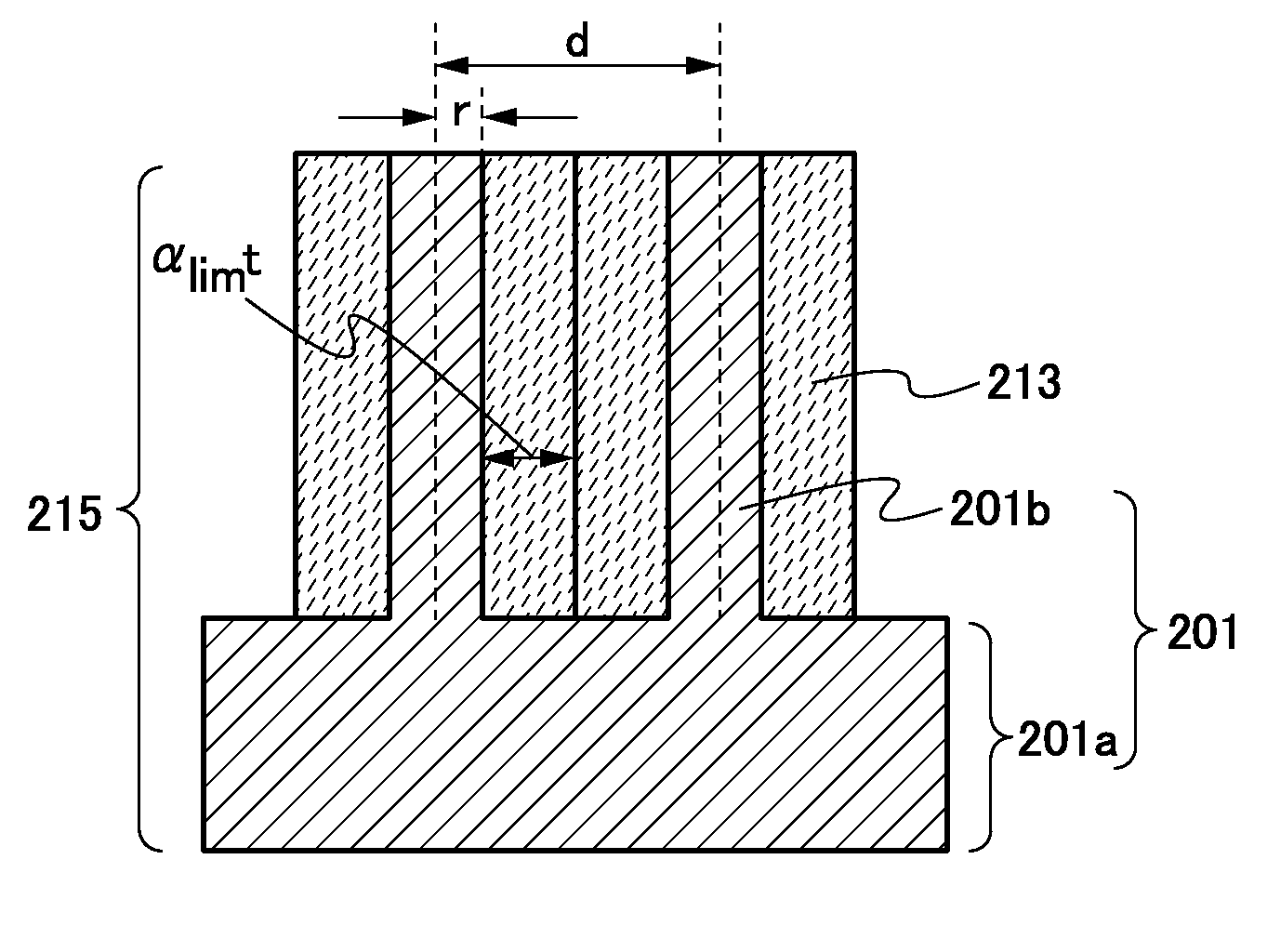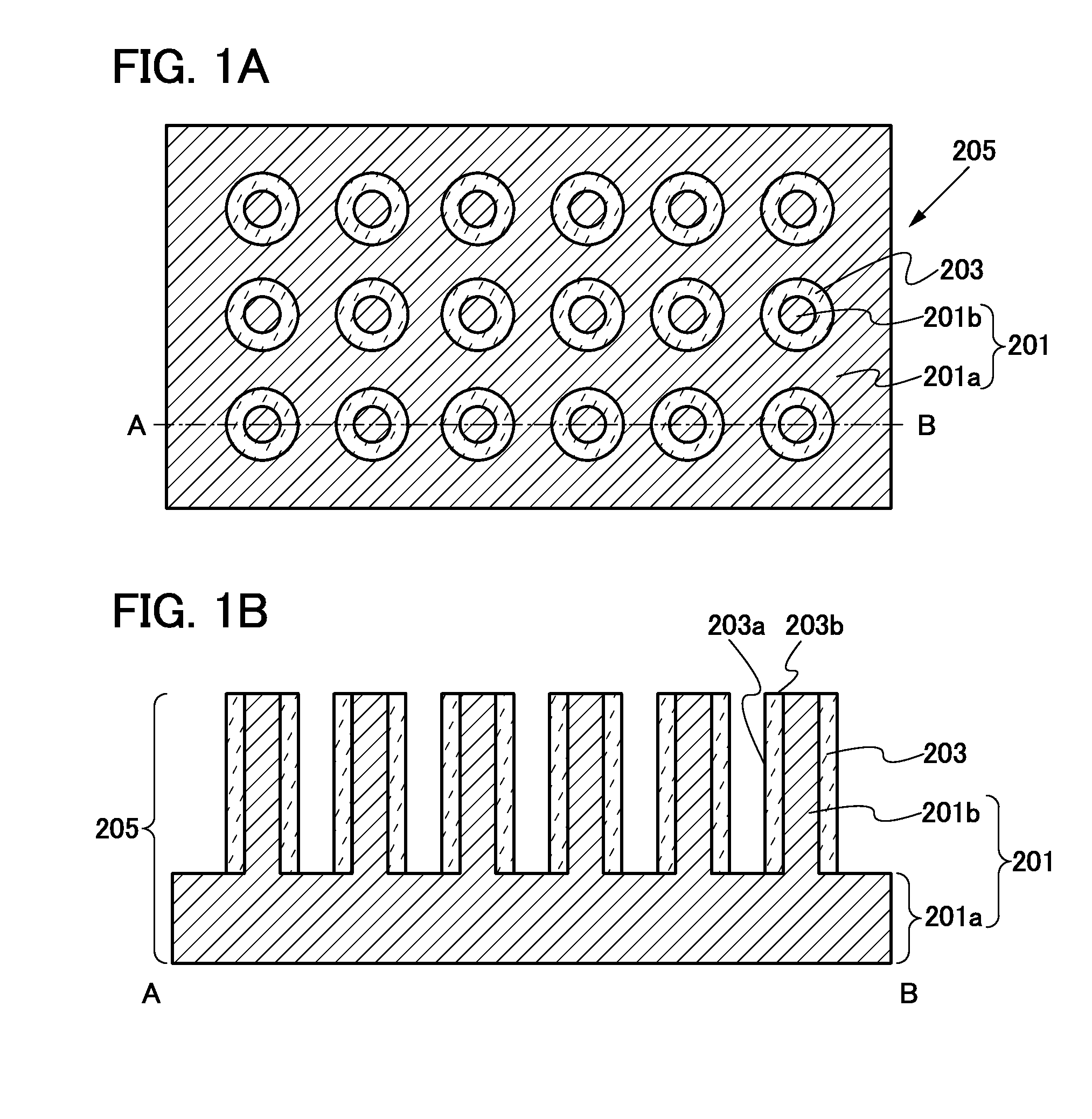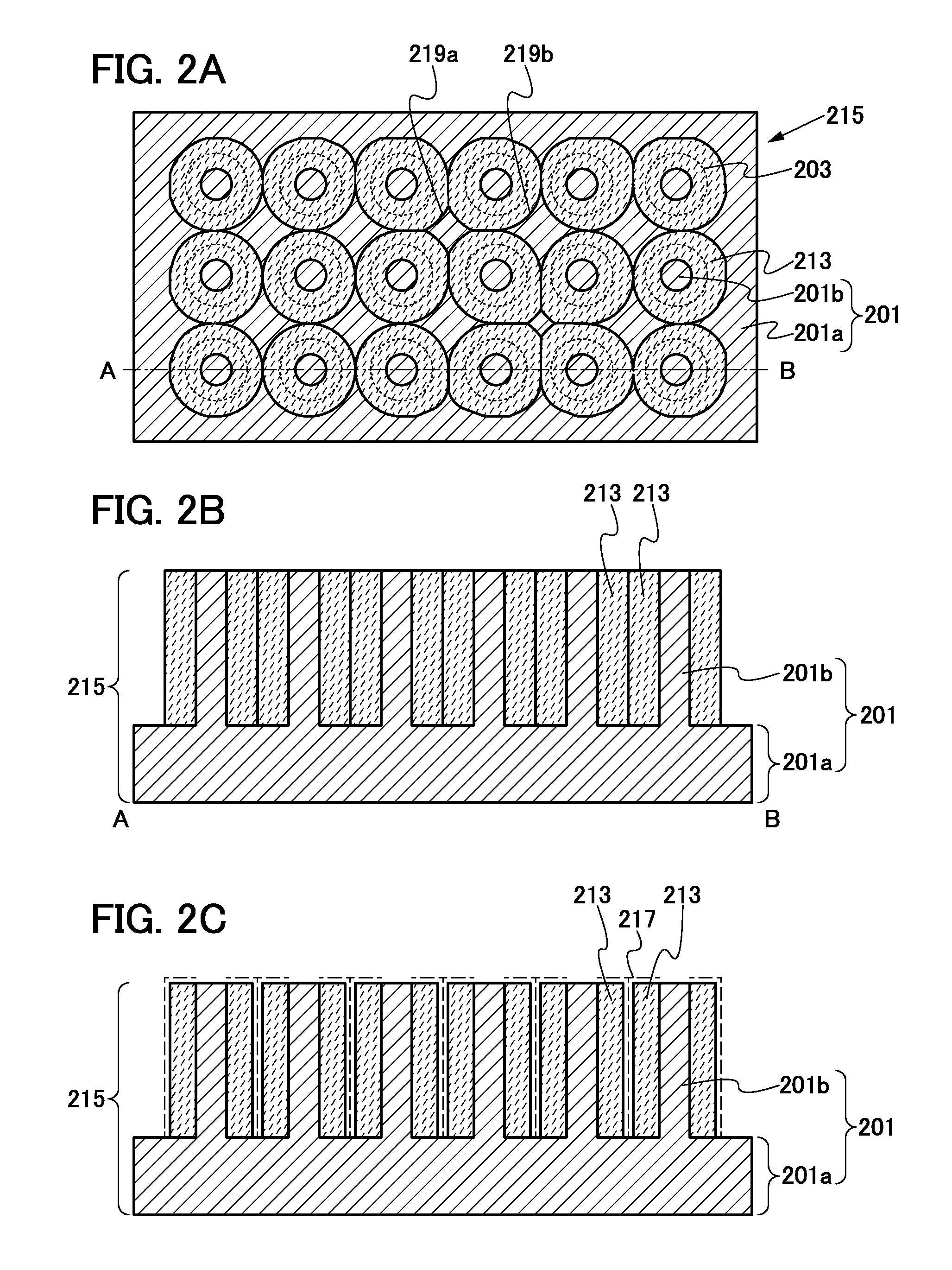Power storage device
a power storage device and active material layer technology, applied in the field of power storage devices, can solve the problems of heat generation in the power storage device, deterioration of the negative electrode, and decreased uniformity of the electrode reaction, so as to reduce the amount of carrier ions, increase the resistance of the active material layer of the negative electrode, and increase the voltage of the power storage device
- Summary
- Abstract
- Description
- Claims
- Application Information
AI Technical Summary
Benefits of technology
Problems solved by technology
Method used
Image
Examples
embodiment 1
[0035]In this embodiment, the structure of a negative electrode in which deterioration of battery characteristics due to charge-discharge is small and a formation method thereof will be described with reference to FIGS. 1A and 1B, FIGS. 2A to 2C, FIGS. 3A and 3B, FIG. 4, and FIGS. 5A and 5B.
[0036]First, the structure of a power storage device will be described. Here, one embodiment of a lithium secondary battery which is a typical example of a power storage device in this embodiment will be described with reference to FIGS. 5A and 5B.
[0037]FIG. 5A is a perspective view of a coin-type lithium secondary battery 400. In the lithium secondary battery 400, an external terminal 417 and an external terminal 419 are provided with a gasket (not illustrated) provided therebetween.
[0038]FIG. 5B is a cross-sectional view of the coin-type lithium secondary battery 400 in a direction perpendicular to the top surface of the external terminal 417.
[0039]The lithium secondary battery 400 includes a p...
embodiment 2
[0100]In this embodiment, the structure of a negative electrode which can be used for the power storage device described in Embodiment 1 and a formation method thereof will be described with reference to FIGS. 7A and 7B and FIGS. 8A to 8D. The negative electrode described in this embodiment includes protective layers over the tops of the plurality of protrusions.
[0101]FIG. 7A is a top view of a negative electrode 235 described in this embodiment and FIG. 7B is a cross-sectional view taken along dashed-dotted line C-D in FIG. 7A.
[0102]The negative electrode 235 includes the negative electrode current collector 201 having the common portion 201a and the plurality of protrusions 201b protruding from the common portion 201a, protective layers 237 formed over the tops of the plurality of protrusions 201b, and a negative electrode active material layer 233 formed on side surfaces of the plurality of protrusions 201b and the protective layer 237. Further, the plurality of protrusions 201b ...
embodiment 3
[0116]In this embodiment, a mode in which graphene is provided over the negative electrode active material layer of the negative electrode described in Embodiment 1 will be described with reference to FIG. 9. Note that although description is made using Embodiment 1 in this embodiment, Embodiment 2 can also be used.
[0117]Graphene refers to a sheet of one atomic layer of carbon molecules having double bonds. Graphene is chemically stable and has favorable electric characteristics.
[0118]FIG. 9 illustrates an example in which graphene 247 is applied to the negative electrode described in Embodiment 1. The graphene 247 is formed so as to cover the surface of the common portion 201a of the negative electrode current collector 201, the top of the protrusion 201b of the negative electrode current collector 201, and the negative electrode active material layer 203. The graphene 247 may entirely or partially cover the surface of the common portion 201a of the negative electrode current colle...
PUM
 Login to View More
Login to View More Abstract
Description
Claims
Application Information
 Login to View More
Login to View More - R&D
- Intellectual Property
- Life Sciences
- Materials
- Tech Scout
- Unparalleled Data Quality
- Higher Quality Content
- 60% Fewer Hallucinations
Browse by: Latest US Patents, China's latest patents, Technical Efficacy Thesaurus, Application Domain, Technology Topic, Popular Technical Reports.
© 2025 PatSnap. All rights reserved.Legal|Privacy policy|Modern Slavery Act Transparency Statement|Sitemap|About US| Contact US: help@patsnap.com



